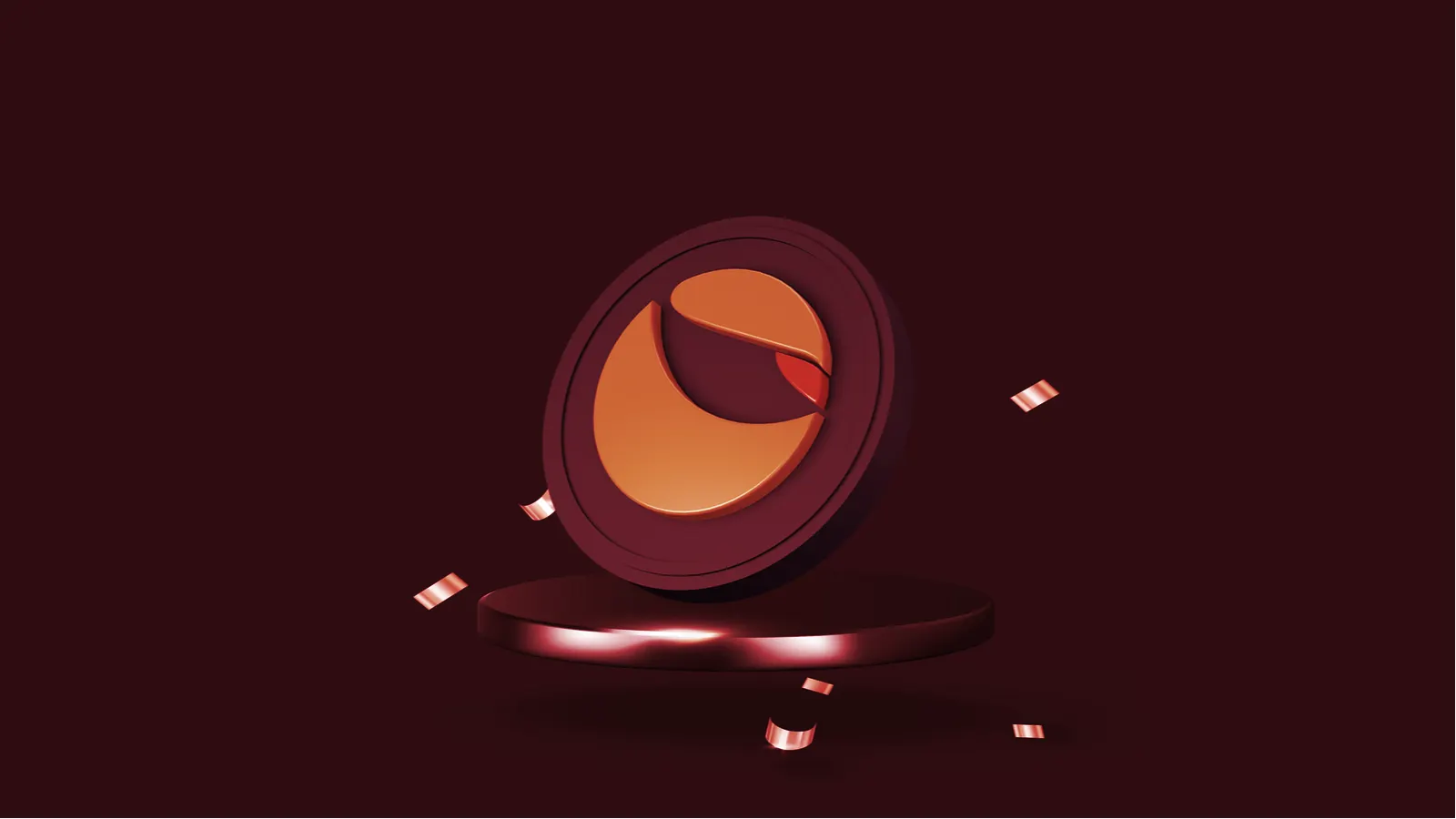When I read about the ‘algorithm’ of @terra_money it sounds just like a crypto version of a pyramid scheme. Investors were promised 20% returns backed by a token whose value is driven only by demand from new investors in the token. There is no fundamental underlying business.
— Bill Ackman (@BillAckman) May 17, 2022
Coin Prices
BTC
$90,592.00
0.09%ETH
$3,120.79
1.08%XRP
$2.09
-0.26%BNB
$902.98
-0.99%SOL
$139.18
2.39%USDC
$0.999795
-0.05%TRX
$0.301998
1.03%STETH
$3,119.43
0.93%DOGE
$0.137416
-1.89%FIGR_HELOC
$1.00
-1.03%ADA
$0.39205
0.40%BCH
$655.00
2.07%WSTETH
$3,819.19
1.01%WBT
$55.09
-0.34%WBETH
$3,393.10
1.07%WBTC
$90,447.00
0.17%WEETH
$3,387.42
1.09%USDS
$0.999448
-0.03%XMR
$511.92
8.79%LINK
$13.25
0.39%BSC-USD
$0.998483
-0.02%LEO
$9.05
-0.00%WETH
$3,119.32
0.97%XLM
$0.225319
-0.97%CBBTC
$90,578.00
0.08%SUI
$1.81
0.47%ZEC
$387.47
2.63%USDE
$0.998794
-0.03%LTC
$80.26
-1.23%AVAX
$13.82
-0.09%HYPE
$24.53
1.71%CC
$0.149457
14.47%HBAR
$0.117533
-1.02%SHIB
$0.00000853
-2.18%USDT0
$0.998354
-0.04%WLFI
$0.167967
-0.06%SUSDS
$1.083
0.36%TON
$1.76
0.58%CRO
$0.100931
-0.46%SUSDE
$1.21
0.03%PYUSD
$0.999731
-0.01%UNI
$5.49
-0.30%DOT
$2.09
-1.67%USD1
$0.999692
-0.00%MNT
$0.98326
0.11%RAIN
$0.00890427
3.64%M
$1.67
-3.93%TAO
$291.37
3.69%AAVE
$168.62
1.97%PEPE
$0.00000589
-1.58%BGB
$3.51
-0.26%XAUT
$4,501.19
0.10%OKB
$111.13
0.93%NEAR
$1.72
0.39%USDF
$0.99662
-0.02%JITOSOL
$174.67
2.49%ETC
$12.44
-1.69%WETH
$3,119.47
1.03%ENA
$0.231084
0.37%POL
$0.168345
-7.01%PI
$0.208638
0.17%ICP
$3.18
-1.77%BUIDL
$1.00
0.00%PAXG
$4,502.31
-0.08%ASTER
$0.717433
-3.08%SOL
$139.40
2.56%HTX
$0.00000171
1.01%JLP
$4.78
1.16%WLD
$0.574968
-0.78%BNSOL
$152.11
2.40%USYC
$1.11
-0.00%USDG
$0.999705
-0.01%PUMP
$0.00245748
3.77%KCS
$10.90
0.28%SYRUPUSDC
$1.15
0.00%RENDER
$2.67
16.21%RLUSD
$0.999554
-0.04%SKY
$0.058516
0.17%APT
$1.78
-2.34%BFUSD
$0.99858
0.02%WBNB
$902.91
-1.04%HASH
$0.024523
1.14%RETH
$3,601.75
0.95%USDC
$0.99963
-0.00%KAS
$0.04771381
2.00%ATOM
$2.59
0.11%ONDO
$0.399268
-0.51%NIGHT
$0.07186
0.99%GT
$10.29
-0.60%ALGO
$0.133743
-0.85%ARB
$0.205908
-2.00%RSETH
$3,314.96
1.15%QNT
$75.27
1.01%FIL
$1.49
-0.93%TRUMP
$5.47
1.00%MYX
$5.42
9.56%WSTETH
$3,808.62
1.11%VET
$0.01161951
-2.06%LBTC
$90,760.00
-0.12%FBTC
$90,803.00
0.30%SOLVBTC
$90,809.00
0.59%NEXO
$0.957445
-0.49%USDD
$0.998622
0.00%FLR
$0.01122102
0.33%BONK
$0.00001053
-0.74%XDC
$0.04810858
-1.12%JAAA
$1.022
0.00%LSETH
$3,319.96
1.15%METH
$3,379.47
0.98%USDTB
$0.999072
-0.06%OUSG
$113.92
0.00%SEI
$0.121385
0.66%WM
$0.99725
0.08%USTB
$10.95
0.00%IP
$2.24
11.45%PENGU
$0.01208618
0.48%USDC.E
$0.999605
-0.01%WBTC
$90,444.00
0.12%FET
$0.305135
7.56%STX
$0.38669
-2.30%VIRTUAL
$1.07
0.47%MORPHO
$1.29
-0.03%CLBTC
$90,541.00
0.00%EZETH
$3,330.53
1.06%USDY
$1.11
0.51%JUP
$0.215132
1.80%JUPSOL
$161.98
2.66%CAKE
$2.00
-4.11%LIT
$2.64
-0.58%USDAI
$1.00
-0.01%SYRUPUSDT
$1.11
0.00%WFLR
$0.01122402
0.43%WETH
$3,119.13
1.03%BDX
$0.084696
-4.61%OSETH
$3,308.51
1.17%DAI
$0.999536
-0.03%XTZ
$0.577595
-2.09%OP
$0.318385
-1.32%CRV
$0.40551
-1.92%EUTBL
$1.22
0.04%KHYPE
$24.77
1.76%CTM
$0.127629
1.07%USD0
$0.989566
-0.80%WETH
$3,120.29
1.01%SPX
$0.585095
0.02%LDO
$0.640997
0.31%TBTC
$90,594.00
0.30%INJ
$5.25
-0.62%AERO
$0.555402
2.68%CHZ
$0.04911282
-1.96%FLOKI
$0.00005166
-0.85%GTETH
$3,121.75
1.10%FDUSD
$0.998368
-0.09%GHO
$0.99952
0.03%TUSD
$0.997059
-0.01%ETHFI
$0.749873
0.97%TIA
$0.554178
-0.76%MSOL
$188.25
2.55%DASH
$37.60
-0.22%STEAKUSDC
$1.11
-0.03%LIQUIDETH
$3,370.05
1.89%SYRUP
$0.397978
0.03%FTN
$1.086
-0.02%GRT
$0.04269588
0.46%ETHX
$3,363.70
1.07%JASMY
$0.00894991
3.63%CBETH
$3,495.77
1.04%AB
$0.00446419
-0.43%WAPE
$0.209686
-1.87%IOTA
$0.099244
-3.47%BTT
$0.00000042
-0.53%SBTC
$91,758.00
1.51%STKAAVE
$168.18
2.98%STRK
$0.081823
-1.57%2Z
$0.117442
-0.24%XCN
$0.00959044
12.52%USDB
$0.998703
0.18%ENS
$10.42
-0.81%SUN
$0.02071822
0.63%CFX
$0.076513
-1.04%JST
$0.03953065
-4.57%PYTH
$0.06789
-0.59%BSV
$19.47
0.83%FARTCOIN
$0.384105
0.94%WIF
$0.379983
-0.37%KAIA
$0.064729
0.74%WSTX
$0.378708
5.25%PENDLE
$2.19
5.49%GNO
$139.67
1.20%TWT
$0.882659
-1.64%NFT
$0.00000037
-0.25%TEL
$0.00381318
3.03%CRVUSD
$0.998615
-0.04%EURC
$1.16
0.05%CUSD
$0.99457
-0.68%DOGE
$0.137413
-1.91%BTC.B
$90,644.00
0.18%OHM
$21.48
-0.50%XPL
$0.166974
2.39%KAU
$144.02
-0.06%USR
$0.999342
-0.10%SAVAX
$17.18
-0.05%GALA
$0.00711749
-1.44%RIVER
$17.12
12.59%WSTUSR
$1.13
0.04%JTRSY
$1.091
0.00%S
$0.085131
-1.51%RAY
$1.20
2.03%PIPPIN
$0.320893
-22.82%SAND
$0.118401
-2.31%VSN
$0.088567
0.19%BUSD
$0.998803
-0.29%EETH
$3,119.71
1.03%ZRO
$1.50
-1.27%WEETH
$3,385.90
1.10%USX
$0.99936
0.01%H
$0.165383
2.31%GLM
$0.299976
2.91%KAG
$80.53
1.29%THETA
$0.298593
-2.33%BAT
$0.198941
-3.44%UBTC
$90,575.00
0.13%ZK
$0.03417906
-3.47%ZBCN
$0.00296813
-1.39%FRXETH
$3,116.54
1.05%WETH
$3,118.71
1.04%A
$0.173669
-4.18%FRAX
$0.993509
0.11%ASBNB
$957.45
-1.08%NEO
$3.92
-1.72%CMETH
$3,379.95
0.91%MERL
$0.252864
-1.11%MANA
$0.142352
-4.35%GTBTC
$90,899.00
0.24%DCR
$15.78
-0.11%HNT
$1.43
1.91%MON
$0.02451099
-2.25%STABLE
$0.01470405
-0.19%WETH
$3,115.95
0.70%ULTIMA
$6,885.94
15.42%BBTC
$89,013.00
-1.40%BTSE
$1.59
1.22%MWC
$23.00
0.01%COMP
$26.47
-0.54%UDS
$2.49
-2.93%BBSOL
$157.40
2.63%WHYPE
$24.53
1.72%WSTETH
$3,820.26
1.04%
